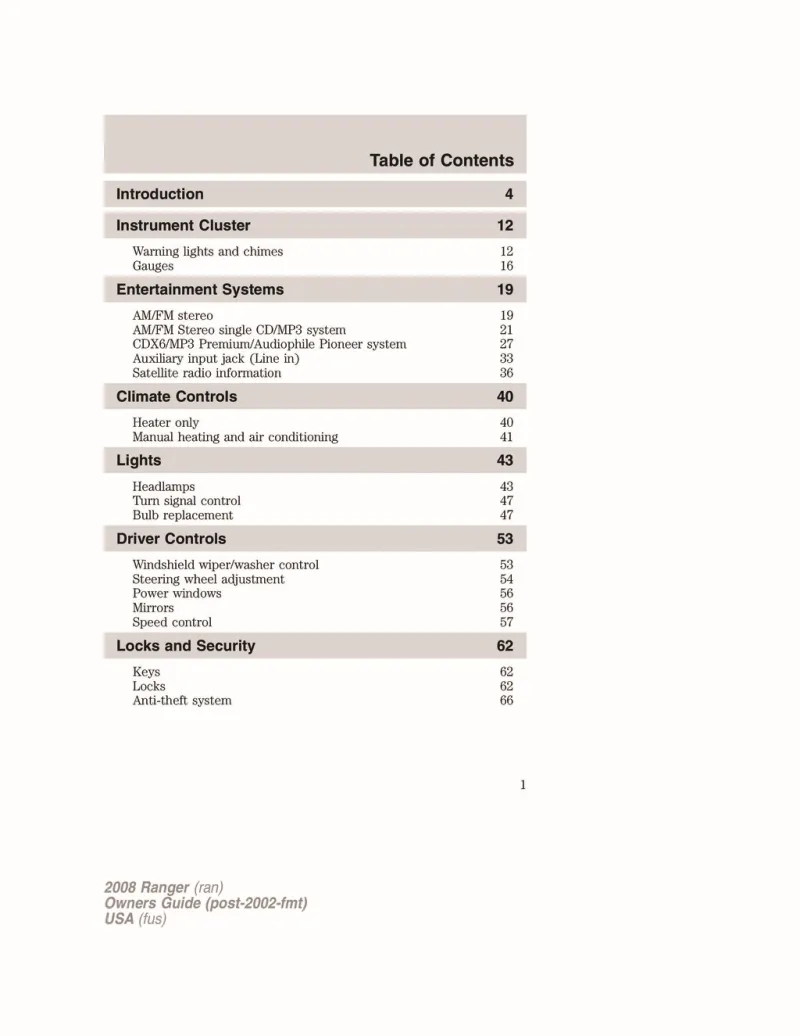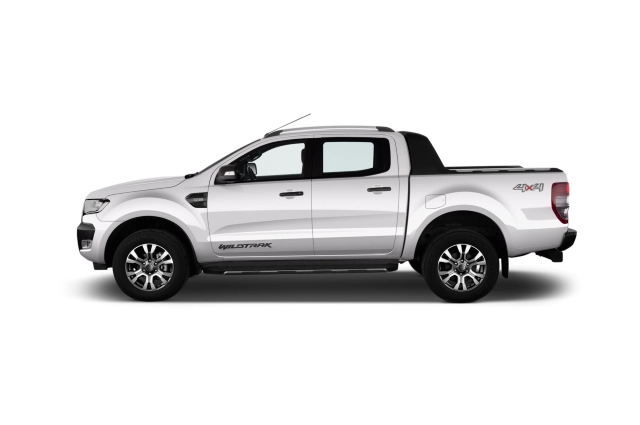2008 Ford Ranger Owner's Manual

Table of Contents
2008 Ford Ranger Overview
Introduction
The 2008 Ford Ranger stands out as a compact pickup truck that combines rugged performance with impressive versatility. Renowned for its reliability and user-friendly features, the Ranger has cemented its place as a popular choice among truck enthusiasts and casual users alike. With a distinctive blend of style, strength, and affordability, this model showcases the classic Ford truck design with a contemporary twist, making it suitable for daily commuting, outdoor adventures, and light-duty work tasks.
Powertrains
The 2008 Ford Ranger offers a lineup of robust powertrains designed to deliver strength and efficiency. The base model comes equipped with a 2.3-liter inline-four engine that produces 143 horsepower and 154 lb-ft of torque, making it an ideal choice for everyday driving. For those seeking more power, the optional 4.0-liter V6 engine delivers 207 horsepower and 238 lb-ft of torque. Both engines can be paired with either a five-speed manual transmission or a five-speed automatic transmission, ensuring smooth shifting and performance tailored to different driving styles.
Trims
Features
Standard features of the 2008 Ford Ranger include air conditioning, a stereo system with CD player, and optional upgrades like fog lights and a power-adjustable driver's seat. Higher trims may offer features such as leather upholstery, upgraded audio systems, and enhanced safety options, ensuring that the Ranger remains competitive in the compact truck market.
Owner's Manual
The 2008 Ford Ranger's owner's manual serves as an essential guide for maintaining and operating the vehicle effectively. It contains detailed instructions for routine maintenance, troubleshooting tips, and safety information, empowering owners to get the most out of their Ranger while ensuring its longevity and performance on the road.
User manual download
The Ford Ranger owner manual for the 2008 model year is to be found in PDF downloadable format on this page. The owner manual for the model year 2008 is free and in English, but the repair manuals are usually not easy to get and may cost more.
Manual Questions
Fill the form below and someone will help you!

